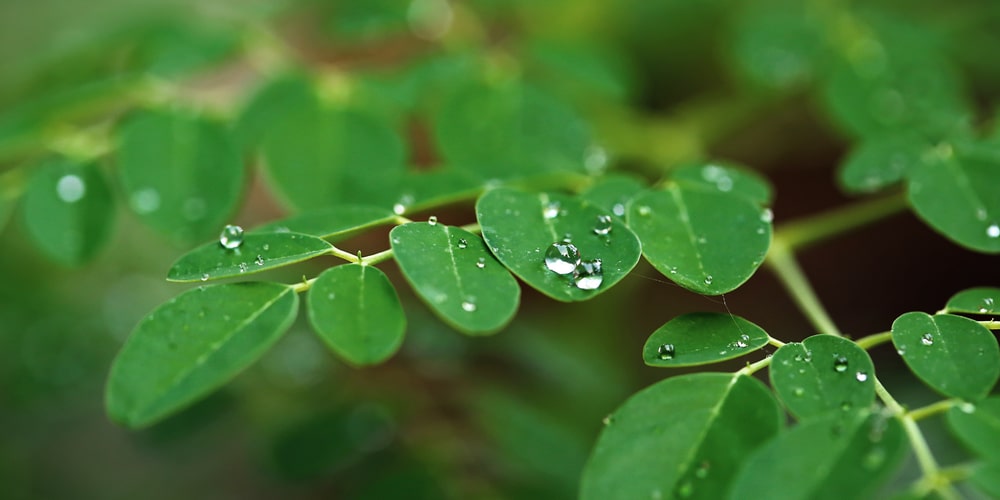The moringa tree is native to India. As a result, it favors high temperatures and harsh weather conditions. It isn’t considered an invasive species even though it has spread all over the world. The tree has little to no effect on native plant and animal species where it grows, so even though it is an outsider, it has not been observed to harm its new environments.
Moringa trees are cultivated for their leaves, which people use for medicinal and cosmetic products. Additionally, people harvest the seed pods, bark, and even the roots, which have a flavor that resembles horseradish. Thus far, Hawaii has established successful commercial cultivation of the moringa tree in the United States.
Is the Moringa Tree a Good Choice for Arizona Gardeners?

Absolutely! The moringa tree does not need extensive irrigation systems; it can thrive on whatever rainwater it receives. It grows best in arid climates, making even Phoenix an excellent place for the tree to grow. Moringa trees are not bothered by the soaring desert heat, and the lack of humidity isn’t an issue either.
Arizona only receives an average of nine inches of rain each year, so the moringa tree’s roots are safe from root rot. Root rot can occur when trees’ roots sit in excess water, which eventually wears away the root structures because they’re waterlogged and can no longer effectively feed the tree or hold it upright.
If you would like to grow moringa trees in Arizona, you are beginning with an excellent climate to do so, and these trees, compared to fruit trees or nut trees, require minimal extra care to thrive in such a climate.
Things Arizona Gardeners Should Know About Growing Moringa Trees
Moringas can achieve towering heights in short periods. If your goal is to raise them to use their seed pots and leaves for commercial products, you should prevent them from growing to their maximum recorded height in Arizona, which is 18 feet. This will make harvesting its seeds and leaves an unnecessary challenge. Moringa trees can reach this height in just six months.
To prevent your moringa trees from becoming too tall, you can top them. Topping is a technique that entails cutting the tree to your desired height. You cut the branches down so that they remain and can regrow at this new shortened height—you shouldn’t cut the tree at the trunk when you’re topping it.
Once you’ve cut your moringa down to keep it shorter, the branches and leaves will grow back in a few weeks. This process is also known as rounding over or hat-racking.
It still does freeze in Arizona, so if your moringa does experience a frost or a prolonged freeze and appears to have died or suffered damage, all you need to do is cut the tree down to ground level. Once the weather conditions return to the moringa tree’s preferred dry, sunny conditions, the tree should begin to grow back.
Benefits of Moringa
According to horticulturists and nursery professionals in Arizona, just one-half cup of cooked moringa leaves holds an entire day’s recommended value of Vitamins A and C. The leaves contain seven times more Vitamin C than orange juice. The leaves also have much more potassium than bananas, with way fewer carbohydrates as well.
Moringa tree oil from the seed pods is used as edible oil and even as a biofuel. It is also found in many skin products as a moisturizer.
Moringa powder, which is made from dried and ground-up leaves, can be added to teas and even smoothies. It doesn’t have a unique flavor, but it does contain more than ten times the recommended daily intake of Vitamin E in just three ounces.
Wrap Up
Arizona farmers can embrace the moringa tree as a non-invasive visitor full of health benefits and potential for creating jobs as well as providing natural health products to a market with demand for them.
